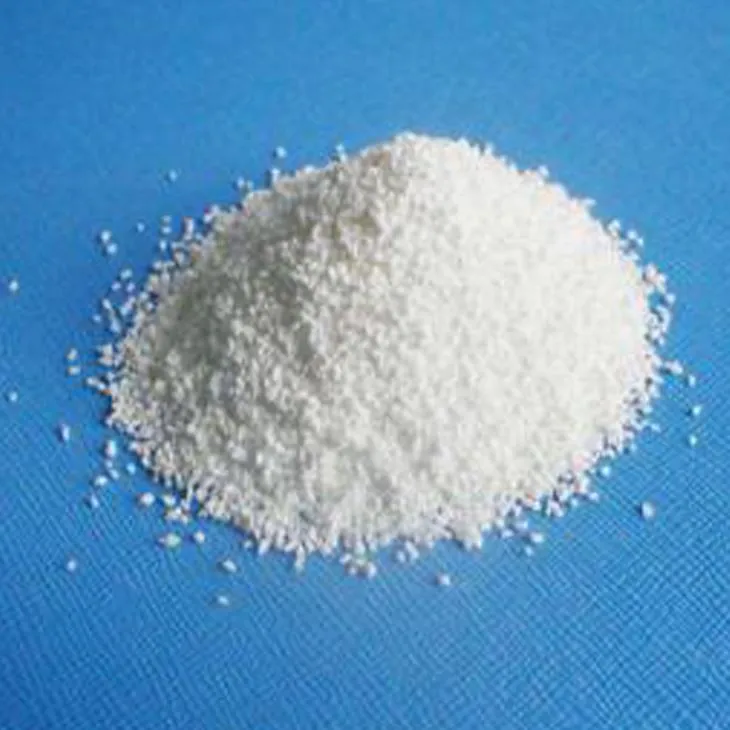



Peroxymonosulfate promotes anaerobic fermentation of residual sludge to produce fatty acids
In recent years, with the acceleration of urbanization and the rapid increase in population, the problem of sewage treatment and the resulting surplus sludge has become increasingly serious. The treatment and disposal of surplus sludge not only affect the ecological environment and urban landscape, but also cause waste of resources. Anaerobic fermentation, as an effective sludge treatment method, can convert excess sludge into useful fatty acids, which not only provides a good solution for sludge reduction, but also opens up new avenues for resource recycling. Recent studies have shown that peroxymonosulfate can significantly promote anaerobic fermentation processes, thereby optimizing the production of fatty acids.

Peroxymonosulfate, as a new type of chemical reagent, has gradually attracted attention for its application in anaerobic fermentation
PMS has good oxidizing properties and can promote microbial metabolic activity and enhance its activity under anaerobic conditions. This characteristic makes PMS an important additive for optimizing the anaerobic fermentation process of residual sludge. Specifically, the introduction of khso5 can effectively improve hydrogen generation in anaerobic environments, enhance the ability of anaerobic microorganisms to degrade organic matter, and promote the synthesis of fatty acids.
Research has shown that combining peroxymonosulfate with residual sludge can improve the conversion rate and yield of fatty acids during the fermentation process
The experimental results showed that under different concentrations of caroat conditions, the generation rate and final yield of fatty acids were significantly improved. Especially at appropriate dosages of monopersulfate, the efficiency of anaerobic fermentation can be increased by over 30%, providing effective experimental evidence for subsequent sludge treatment technologies. In addition, the use of PMS helps to control the odor generated during anaerobic fermentation and improve the quality of the final product.
In the implementation of anaerobic fermentation promoted by peroxymonosulfate, its impact on microbial community structure still needs to be considered
Excessive PMS may have inhibitory effects on certain anaerobic microorganisms, thereby affecting the overall fermentation efficiency. Therefore, it is particularly important to accurately control the amount of PMS added and optimize fermentation conditions based on specific sludge characteristics.
In summary, the khso5 structure, as an effective method for promoting anaerobic fermentation of residual sludge to produce fatty acids, demonstrates its broad application prospects in sludge treatment and resource recovery. Future research should focus on the mechanism of action of PMS, the determination of the optimal dosage, and the combined effect with other treatment technologies, in order to achieve more efficient and economical utilization of sludge resources. Through this method, not only can the processing pressure of residual sludge be effectively reduced, but it can also provide a solid foundation for the development and utilization of renewable resources.
-
How and Why to Disinfect Water Softeners for Safe, Reliable WaterNewsNov.24,2025
-
Effective Deionized Water Disinfectant Solutions for Healthcare & Industrial UseNewsNov.24,2025
-
Commonly Used Disinfectant for Drinking Water – Global Uses & InnovationsNewsNov.23,2025
-
Chemical to Disinfect Water – Essential Solutions for Safe, Clean Drinking WaterNewsNov.23,2025
-
Blue Water Disinfectant: Safeguarding Global Water Quality with InnovationNewsNov.22,2025
-
Bleaching Powder for Water Disinfection – Affordable & Effective Water Treatment SolutionNewsNov.22,2025
-
Bleaching Powder Drinking Water: Effective, Affordable Disinfection WorldwideNewsNov.21,2025










